Links
fixed: 2.4.2008
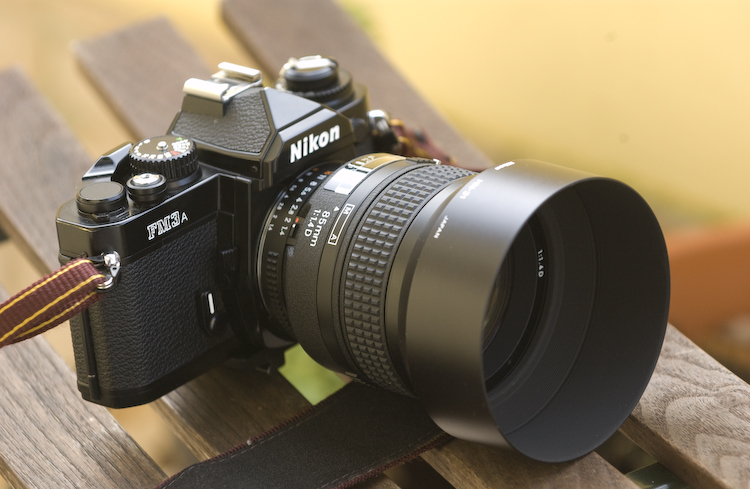
One of the effects of the conversion of the
photography market towards digital sensors is the quick and unbelievable
fast succession of new Digital SLRs (DSLRs) and digital compact cameras
that are surfacing. The main reason is the potential of the CCD/CMOS
industry and the image data processing chain development to increases
resolution, signal to noise ratio and ISO performance regularly. With
digital SLR systems the quality already surpassed 35 mm film cameras
with the 8 -10 megapixel systems and new DSLRs will continue this
trend with unbelievable ISO performance beyond ISO1600. Some DSLRs
are already in the resolution space of medium format cameras. Medium
format however hasn't yet played the last card concerning resolution and
ISO performance. As cameras now
behave (and are designed) more like computers also value of a camera
body decreases with time in a fashion only known from Personal Computers
these days (good to know that this doesn't apply to lenses). However there are some cameras that actually behave
against this common trend. One camera body that belongs to
this category is the Nikon FM3A. Its the last mechanical film camera of
the Nikon FMx Series that was developed and its interesting to see how
this little wonderful camera manages to keep up its value on the second
hand market. Prices are still in a range similar to buying this camera "new in
a box". This is not a usual behaviour of analogue cameras although we see comparable price
trends (or the absence of a trend) with some cameras from Leica. But the
Nikon F5 e.g. lost dramatically in value and can be ebayed for 300-400€.
That's a ridiculous price for a full professional SLR and prices are
obviously still descending for these cameras. In fact comparable loss of
value happens with old digital heroes like the D1x or the D1h. The
megapixel and ISO (I-dont-want-noise) -race is also about to kill the prices for the last
full "D" series cameras: the D2x and the D2h. Prices for these bodys are
in a "freefall" state (second hand value: from about 4000$ towards 1300$
now at the time of writing this text) since the announcement of the D3 and D300 and we
will see the same happening with the digit-3 series pro-cameras in the
next years when new full frame FX digital cameras appear from Nikon.
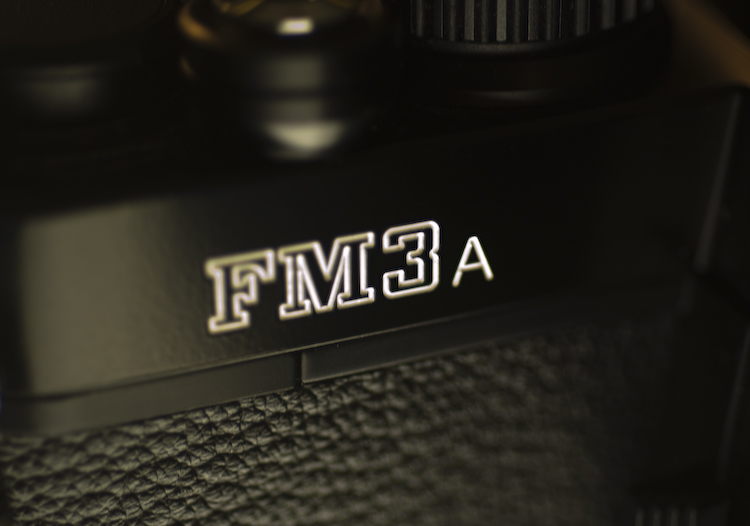
There are some
interesting reasons why the FM3A is a good example for a camera that
kept its value:
1. The FM3A wasn't
manufactured in high numbers therefore the camera didn't make it into
everybody's camera bag. Production only started in 2001 and ended
1.2006.
2. It also wasn't brought to market in a time for
analogue or manual "metal" cameras. Most people saved their money for a
D70 or 20D at that time.
3. The Nikon FM2 was at
the time of the FM3A a very affordable second hand alternative for the
FM3A with lots of FM versions floating around in the used market. Lots
of interested buyers did put their cash on the desk for an FM2.
These are some of the
reasons why the camera has become a collector item by now and prices for "like new" FM3A
body's are in the range of the cost of the camera new from 2003. The
FM3A however should not sit on a board. There are still some
applications where digital photography cannot compete with analogue
technology and the ability to happily shoot without any battery can also
be handy occasionally especially under extreme cold conditions or for
long distance travels to very remote places (it should be noted that
solar energy can be used to refill the batteries of a digital camera -
some interesting solutions are on the market already). One area that also still
is film territory (and might stay the last film domain for a while) is
the extreme long exposure domain. Shots made from shutter speeds ranging from minutes towards
hours are not on the application list of digital SLRs mainly because of power
drain and noise accumulation. There do exist some techniques to overcome
the problems with digital in this area (stacking of hundreds of
exposures to one final image f.e. in special star trail software) but
analogue film cameras are doing very well here creating wonderful star
trail shots.
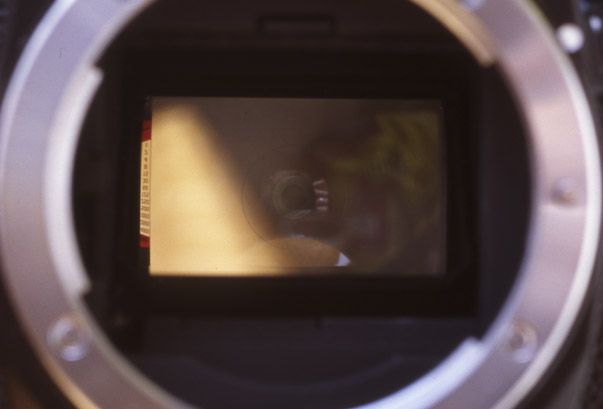
The viewfinder is a fresh experience if you
come from a DSLR. The needle type of shutter speed display is however
something that has caused some debates. I believe it gives very good
control but this is a very subjective impression.
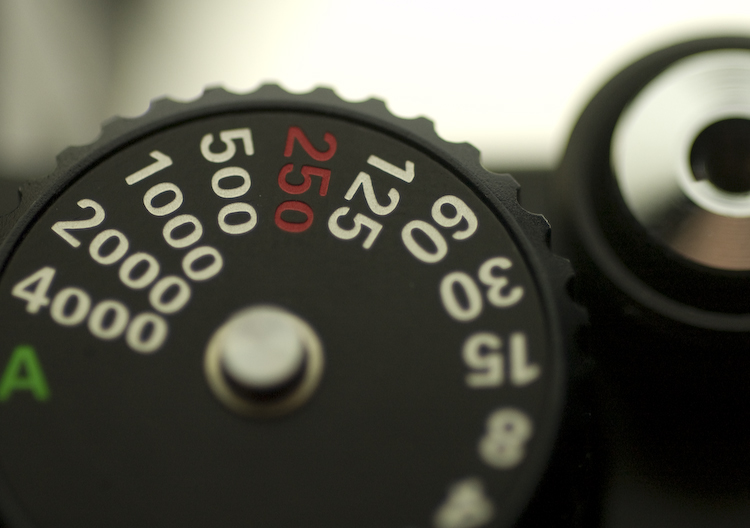
The shutter speed dial is
the most important dial of the camera in manual mode. Unfortunately it
is not rotating very smoothly. The operation is kind of too
tight.
The other advantage with
manual, mechanical cameras is simple - if you stay in the wild for some
weeks things usually can turn uncomfortable. A mechanical camera is a
wonderful fallback system that can even be used in the absence of
battery power provided all lenses are backwards compatible (still
possible with the Nikon lens system though its getting more a problem
since all new lens designs seem to be of G-Type unfortunately and do not
have an aperture ring anymore - btw. you can use these lenses wide open
if you manage to keep the aperture from closing down mechanically).
Besides being a good
tool for special applications the FM3A is always wonderful to handle. It
has the old fashioned precision manufacturing feeling and handling that is based on brass,
aluminium and iron and feels just very reliable and indestructible. Its
size is also a reason for being a good companion for all
circumstances where the package should be small. Its shutter is based on
a hybrid technology using power if used in A-Mode and being fully
mechanically driven using the manual shutter selections.
A very good and detailed
explanation of the FM3A and its forerunner the FM2 can be found at
www.mir.com.my/rb/photography/hardwares/classics/nikonfmseries/fm3a/htmls/index.htm.
B.t.w.:
http://www.mir.com.my/rb/photography is one of the most impressive technical
Nikon references available online!
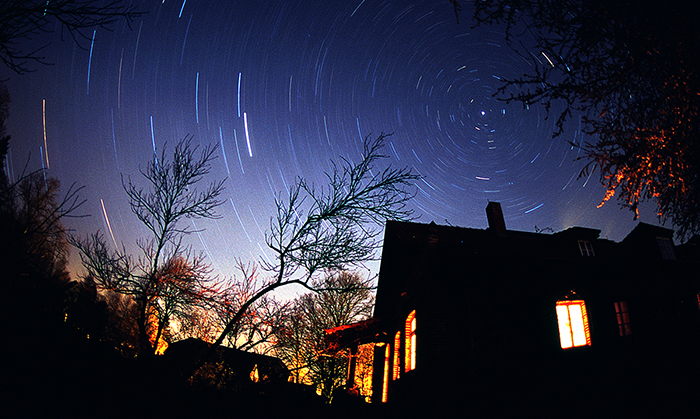
Nikon FM3A, Nikkor 16 mm 2.8 (2 hrs.
exposure), the room in the house was lit with candles. This shot is
where the FM3A shines. You can leave it outside in the cold for hours
and it will nicely keep the shutter open without battery drain - just
use a mechanical cable release - thats just how it used to be.